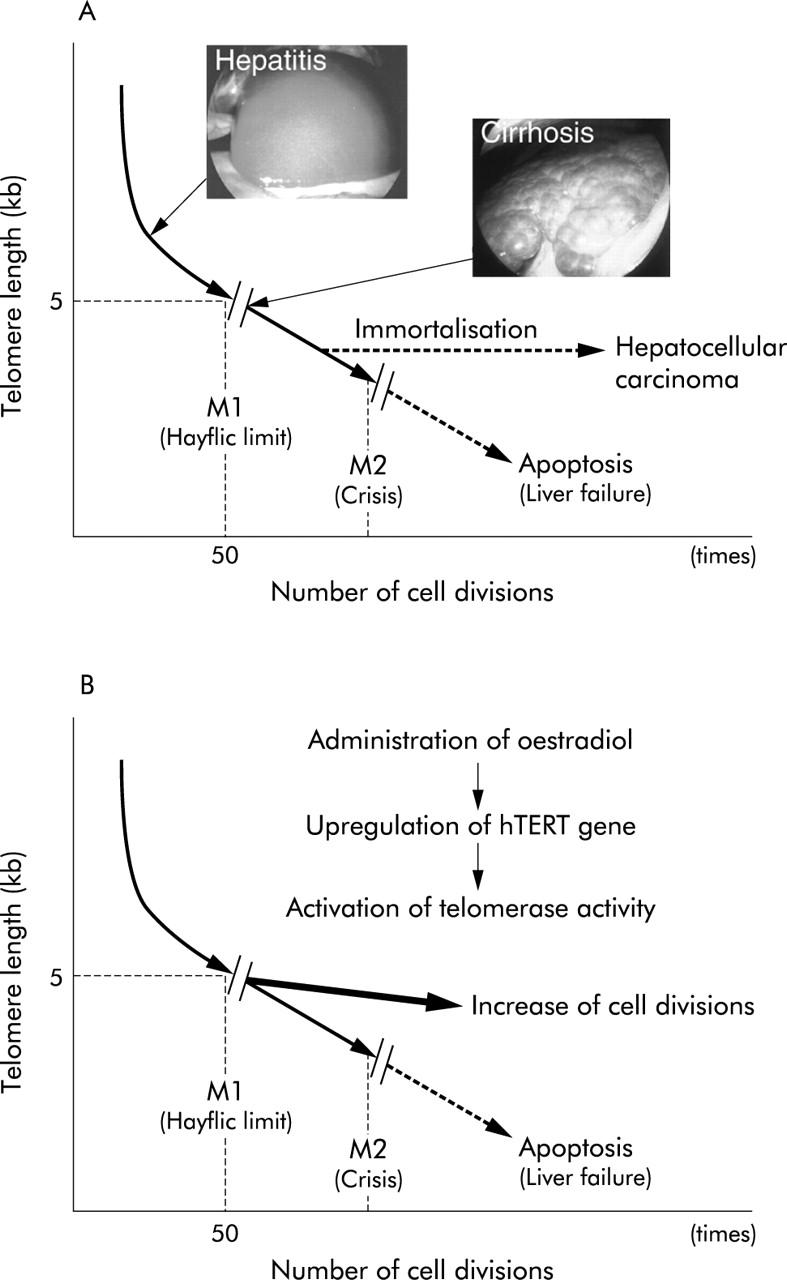Figure 1.

The telomere hypothesis (A) and the strategy of oestrogen dependent telomerase therapy (B) for chronic liver disease. (A) Chronic liver injury induces continuous cell death and regeneration resulting in critical telomere shortening, which in turn culminates in hepatocyte replicative senescence (M1) or crisis (M2). Critical telomere shortening produces severe chromosomal instability that may play an important role in hepatocyte immortalisation followed by the development of hepatocellular carcinoma. (B) Oestrogen dependent transactivation of the hTERT gene prevents extensive telomere shortening, thus prolonging the lifespan of hepatocytes in chronic liver disease.
